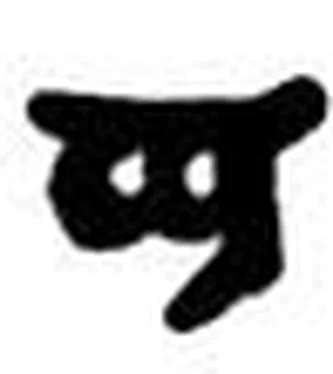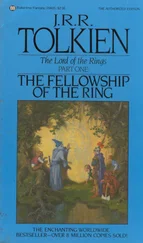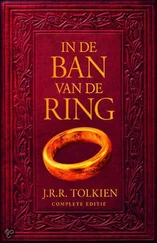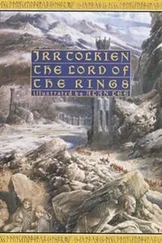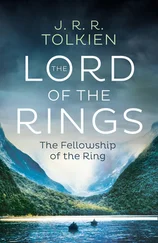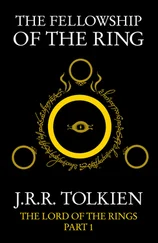John Tolkien - Fellowship of the Ring
Здесь есть возможность читать онлайн «John Tolkien - Fellowship of the Ring» весь текст электронной книги совершенно бесплатно (целиком полную версию без сокращений). В некоторых случаях можно слушать аудио, скачать через торрент в формате fb2 и присутствует краткое содержание. Жанр: Фэнтези, на английском языке. Описание произведения, (предисловие) а так же отзывы посетителей доступны на портале библиотеки ЛибКат.
- Название:Fellowship of the Ring
- Автор:
- Жанр:
- Год:неизвестен
- ISBN:нет данных
- Рейтинг книги:4 / 5. Голосов: 1
-
Избранное:Добавить в избранное
- Отзывы:
-
Ваша оценка:
- 80
- 1
- 2
- 3
- 4
- 5
Fellowship of the Ring: краткое содержание, описание и аннотация
Предлагаем к чтению аннотацию, описание, краткое содержание или предисловие (зависит от того, что написал сам автор книги «Fellowship of the Ring»). Если вы не нашли необходимую информацию о книге — напишите в комментариях, мы постараемся отыскать её.
Fellowship of the Ring — читать онлайн бесплатно полную книгу (весь текст) целиком
Ниже представлен текст книги, разбитый по страницам. Система сохранения места последней прочитанной страницы, позволяет с удобством читать онлайн бесплатно книгу «Fellowship of the Ring», без необходимости каждый раз заново искать на чём Вы остановились. Поставьте закладку, и сможете в любой момент перейти на страницу, на которой закончили чтение.
Интервал:
Закладка:
The Stoors lingered long by the banks of the Great River Anduin, and were less shy of Men. They came west after the Harfoots and followed the course of the Loudwater southwards; and there many of them long dwelt between Tharbad and the borders of Dunland before they moved north again.
The Fallohides, the least numerous, were a northerly branch. They were more friendly with Elves than the other Hobbits were, and had more skill in language and song than in handicrafts; and of old they preferred hunting to tilling. They crossed the mountains north of Rivendell and came down the River Hoarwell. In Eriador they soon mingled with the other kinds that had preceded them, but being somewhat bolder and more adventurous, they were often found as leaders or chieftains among clans of Harfoots or Stoors. Even in Bilbo's time the strong Fallohidish strain could still be noted among the greater families, such as the Tooks and the Masters of Buckland.
In the westlands of Eriador, between the Misty Mountains and the Mountains of Lune, the Hobbits found both Men and Elves. Indeed, a remnant still dwelt there of the Dunedain, the kings of Men that came over the Sea out of Westernesse; but they were dwindling fast and the lands of their North Kingdom were falling far and wide into waste. There was room and to spare for incomers, and ere long the Hobbits began to settle in ordered communities. Most of their earlier settlements had long disappeared and been forgotten in Bilbo's time; but one of the first to become important still endured, though reduced in size; this was at Bree and in the Chetwood that lay round about, some forty miles east of the Shire.
It was in these early days, doubtless, that the Hobbits learned their letters and began to write after the manner of the Dunedain, who had in their turn long before learned the art from the Elves. And in those days also they forgot whatever languages they had used before, and spoke ever after the Common Speech, the Westron as it was named, that was current through all the lands of the kings from Arnor to Gondor, and about all the coasts of the Sea from Belfalas to Lune. Yet they kept a few words of their own, as well as their own names of months and days, and a great store of personal names out of the past.
About this time legend among the Hobbits first becomes history with a reckoning of years. For it was in the one thousand six hundred and first year of the Third Age that the Fallohide brothers, Marcho and Blanco, set out from Bree; and having obtained permission from the high king at Fornost 1 1 As the records of Gondor relate this was Argeleb II, the twentieth of the Northern line, which came to an end with Arvedui three hundred years later.
, they crossed the brown river Baranduin with a great following of Hobbits. They passed over the Bridge of Stonebows, that had been built in the days of the power of the North Kingdom, and they took all the land beyond to dwell in, between the river and the Far Downs. All that was demanded of them was that they should keep the Great Bridge in repair, and all other bridges and roads, speed the king's messengers, and acknowledge his lordship.
Thus began the Shire-reckoning , for the year of the crossing of the Brandywine (as the Hobbits turned the name) became Year One of the Shire, and all later dates were reckoned from it. 2 2 Thus, the years of the Third Age in the reckoning of the Elves and the Dunedain may be found by adding 1600 to the dates of Shire-reckoning.
At once the western Hobbits fell in love with their new land, and they remained there, and soon passed once more out of the history of Men and of Elves. While there was still a king they were in name his subjects, but they were, in fact, ruled by their own chieftains and meddled not at all with events in the world outside. To the last battle at Fornost with the Witch-lord of Angmar they sent some bowmen to the aid of the king, or so they maintained, though no tales of Men record it. But in that war the North Kingdom ended; and then the Hobbits took the land for their own, and they chose from their own chiefs a Thain to hold the authority of the king that was gone. There for a thousand years they were little troubled by wars, and they prospered and multiplied after the Dark Plague (S.R. 37) until the disaster of the Long Winter and the famine that followed it. Many thousands then perished, but the Days of Dearth (1158-60) were at the time of this tale long past and the Hobbits had again become accustomed to plenty. The land was rich and kindly, and though it had long been deserted when they entered it, it had before been well tilled, and there the king had once had many farms, cornlands, vineyards, and woods.
Forty leagues it stretched from the Far Downs to the Brandywine Bridge, and fifty from the northern moors to the marshes in the south. The Hobbits named it the Shire, as the region of the authority of their Thain, and a district of well-ordered business; and there in that pleasant corner of the world they plied their well-ordered business of living, and they heeded less and less the world outside where dark things moved, until they came to think that peace and plenty were the rule in Middle-earth and the right of all sensible folk. They forgot or ignored what little they had ever known of the Guardians, and of the labours of those that made possible the long peace of the Shire. They were, in fact, sheltered, but they had ceased to remember it.
At no time had Hobbits of any kind been warlike, and they had never fought among themselves. In olden days they had, of course, been often obliged to fight to maintain themselves in a hard world; but in Bilbo's time that was very ancient history. The last battle, before this story opens, and indeed the only one that had ever been fought within the borders of the Shire, was beyond living memory: the Battle of Greenfields, S.R. 1147, in which Bandobras Took routed an invasion of Orcs. Even the weathers had grown milder, and the wolves that had once come ravening out of the North in bitter white winters were now only a grandfather's tale. So, though there was still some store of weapons in the Shire, these were used mostly as trophies, hanging above hearths or on walls, or gathered into the museum at Michel Delving. The Mathom-house it was called; for anything that Hobbits had no immediate use for, but were unwilling to throw away, they called a mathom. Their dwellings were apt to become rather crowded with mathoms, and many of the presents that passed from hand to hand were of that sort.
Nonetheless, ease and peace had left this people still curiously tough. They were, if it came to it, difficult to daunt or to kill; and they were, perhaps, so unwearyingly fond of good things not least because they could, when put to it, do without them, and could survive rough handling by grief, foe, or weather in a way that astonished those who did not know them well and looked no further than their bellies and their well-fed faces. Though slow to quarrel, and for sport killing nothing that lived, they were doughty at bay, and at need could still handle arms. They shot well with the bow, for they were keen-eyed and sure at the mark. Not only with bows and arrows. If any Hobbit stooped for a stone, it was well to get quickly under cover, as all trespassing beasts knew very well.
All Hobbits had originally lived in holes in the ground, or so they believed, and in such dwellings they still felt most at home; but in the course of time they had been obliged to adopt other forms of abode. Actually in the Shire in Bilbo's days it was, as a rule, only the richest and the poorest Hobbits that maintained the old custom. The poorest went on living in burrows of the most primitive kind, mere holes indeed, with only one window or none; while the well-to-do still constructed more luxurious versions of the simple diggings of old. But suitable sites for these large and ramifying tunnels (or smials as they called them) were not everywhere to be found; and in the flats and the low-lying districts the Hobbits, as they multiplied, began to build above ground. Indeed, even in the hilly regions and the older villages, such as Hobbiton or Tuckborough, or in the chief township of the Shire, Michel Delving on the White Downs, there were now many houses of wood, brick, or stone. These were specially favoured by millers, smiths, ropers, and cartwrights, and others of that sort; for even when they had holes to live in. Hobbits had long been accustomed to build sheds and workshops.
Читать дальшеИнтервал:
Закладка:
Похожие книги на «Fellowship of the Ring»
Представляем Вашему вниманию похожие книги на «Fellowship of the Ring» списком для выбора. Мы отобрали схожую по названию и смыслу литературу в надежде предоставить читателям больше вариантов отыскать новые, интересные, ещё непрочитанные произведения.
Обсуждение, отзывы о книге «Fellowship of the Ring» и просто собственные мнения читателей. Оставьте ваши комментарии, напишите, что Вы думаете о произведении, его смысле или главных героях. Укажите что конкретно понравилось, а что нет, и почему Вы так считаете.
